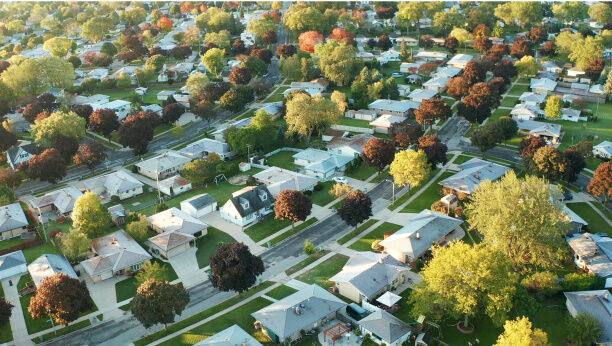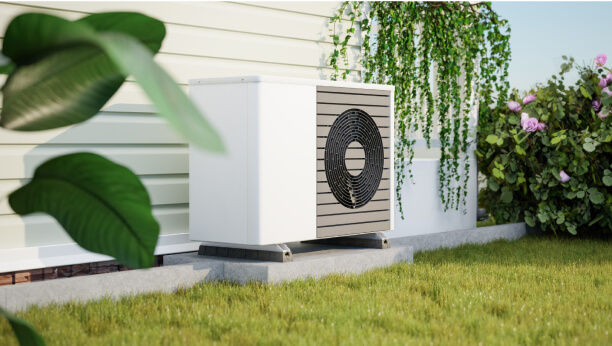Air Source Heat Pumps
All-in-one heating and cooling for all seasons.
Air source heat pumps are a cost-effective replacement option for your central air conditioning and propane/oil furnace or electric resistance heating systems. An all-in-one heating and cooling system, air source heat pumps provide all-season comfort, energy efficiency and cost savings.
Get started with information based on your interests.
Benefits of Air Source Heat Pumps

Significant Savings
Switching to an air source heat pump from propane, fuel oil or another home heating system can save a household up to $1,500 annually, according to energy.gov.

Consistent Comfort
Avoid hot and cold spikes in your home. By running continuously, air source heat pumps maintain your desired temperature.

Better Energy Efficiency
Because they transfer, rather than generate, warm and cool air, air source heat pumps use much less electricity for heating and cooling your home, all year long.

Low Maintenance
Having one system for heating and cooling your home simplifies upkeep when compared to traditional HVAC systems.

Quieter
Air source heat pumps deliver a steady supply of temperature-controlled air. You won’t hear noises from expanding and contracting heat ducts.

More Convenient
Homeowners won’t spend time filling tanks, splitting and hauling wood or be at risk of fuel shortages or seasonal price fluctuations.

Health Factors
An air filter removes harmful particles from indoor air, and many models dehumidify the air, reducing the potential for mold and mildew.

Cleaner Energy
Air source heat pumps do not produce on-site emissions, and they can utilize renewable energy sources, reducing environmental impact.
Air Source Heat Pumps
How an air source heat pump works.
Air source heat pumps use electricity to extract outside air and pump it indoors to heat and cool homes and buildings. Often generating three times more heating and cooling than the electrical energy they use, air source heat pumps consume far less electricity than electric furnaces, baseboard heaters or space heaters.
Learn more below about how air source heat pumps heat and cool, the three types of systems and heating and cooling efficiency ratings.
Heating
Air source heat pumps extract heat from outdoors to deliver concentrated heated air inside. Thanks to technology advances, cold-climate air source heat pumps can extract heat from the air in cold and below-freezing temperatures.
Heat is absorbed from the outside air, compressed and delivered inside the home.
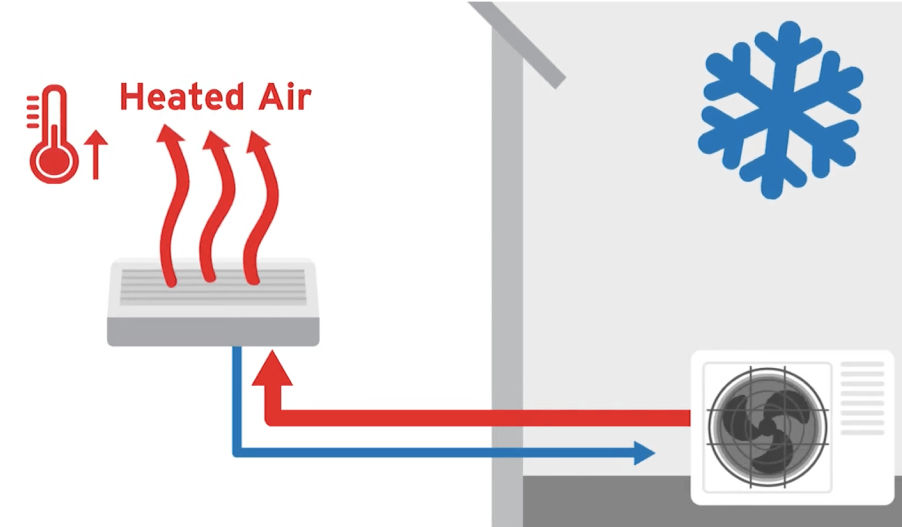
Cooling
Air source heat pumps work like an air conditioner, using a refrigerant to absorb unwanted heat in your home and transfer it to the air outside.
Heat is moved from inside to outside the home.
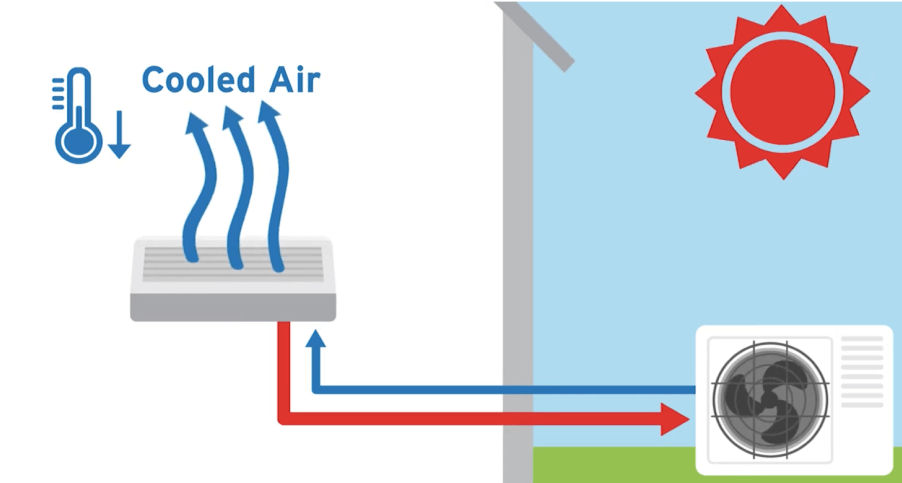
Three Types of Air Source Heat Pump Systems
There are many options to choose from among three types of air source heat pumps described below.
In existing homes, an air source heat pump is an easy upgrade in almost any application, with or without air ducts. In a new home, heat pumps eliminate the need for both duct work and a furnace exhaust vent.
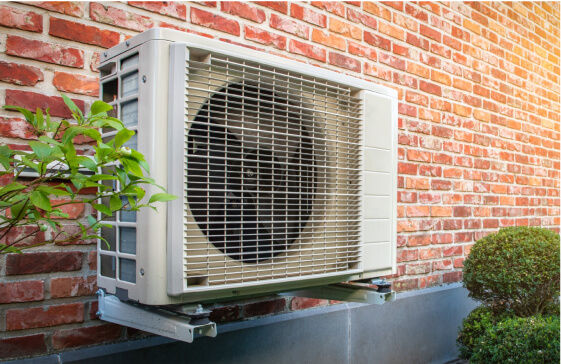
A centrally-ducted air source heat pump system is typically used when ducts are already available throughout the home (like when replacing an existing furnace and central air conditioner).
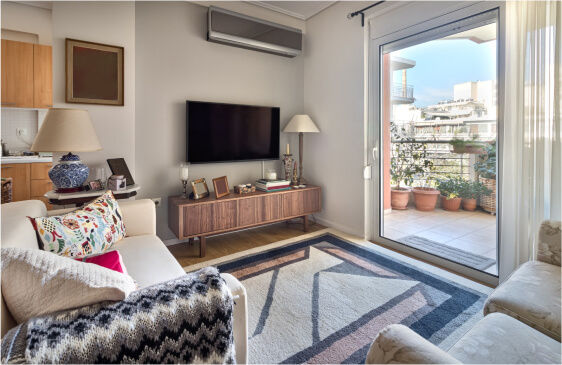
A multi-head ductless mini-split system is typically installed when there is no existing duct work or if the homeowner wants zoned control of individual rooms, like the main living area or bedrooms.
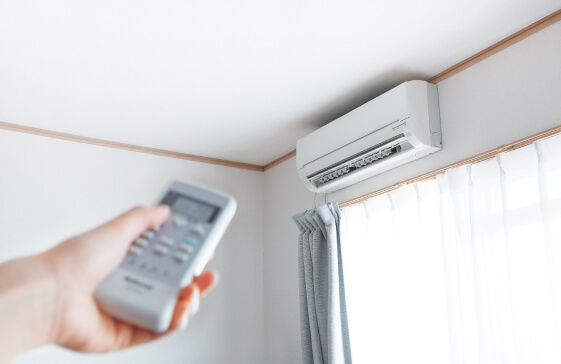
A single-head ductless mini-split system is often installed for heating and cooling a specific area of the home, like add-on rooms without existing duct work.
- 1
- 2
- 3
I’m considering an air source heat pump
Get an estimate, determine rebate eligibility and get connected to a contractor.
Use our interactive tool
Use our comparison tool to get personalized recommendations on air source heat pump and geothermal options for your home.
The yellow EnergyGuide shows cooling and heating efficiency ratings.
Source: U.S. Federal Trade Commission
Efficiency Ratings
Familiar yellow-and-black EnergyGuide labels help you know how much energy an appliance uses and how it compares to energy use of similar models. Air source heat pumps include a cooling and heating rating.
Cooling Efficiency Rating is indicated by the seasonal energy efficiency ratio (SEER2). SEER2 is the cooling output of a system during a typical cooling season divided by the total electric energy used in that same period. The higher the SEER2 rating, the more efficient the air source heat pump.
Heating Efficiency Rating is indicated by the heating season performance factor (HSPF2). An HSPF2 rating is calculated by dividing the total amount of heat output over the heating season by the amount of electricity used during that time. The higher the HSPF2, the more efficient the unit.
Have questions? We’re here to help.
Please call us at (833) 383-4328 or use our online form to provide your contact information and details you would like to discuss.
Air Source Heat Pumps
You may be eligible for rebates and electric rate savings.
DTE does not sell or install air source heat pump systems. However, you can get an estimate, determine rebate eligibility and get connected to a contractor from a third party site.
Electric Pricing Options
DTE customers with an air source heat pump may qualify for the D1.1 CoolCurrents® electric rate. A licensed, independent, electrical contractor will install wiring for a separate D1.1 meter. Learn more about the CoolCurrents rate, including enrollment instructions and smart meter requirements, and please see the Electric Pricing Options page.
CoolCurrents is DTE’s interruptible air conditioning rate that can help customers save significantly on the energy used by an air source heat pump. Rest assured, we do not interrupt service during the heating season (October through April).
If you are a DTE residential electric customer using electricity as your main home heating source, you may be eligible for a rebate when you upgrade to a new, high-efficiency air source heat pump system because it also functions as an air conditioner. For more information, please review the replacement rebates page. You can also call us at (866) 796-0512, or email us.
You may be eligible for rebates and tax credits for qualified energy-efficient improvements to your home. For more information, get an estimate, determine rebate eligibility and get connected to a contractor.
I’m considering an air source heat pump
Get an estimate, determine rebate eligibility and get connected to a contractor.
Use our interactive tool
Use our comparison tool to get personalized recommendations on air source heat pump and geothermal options for your home.
